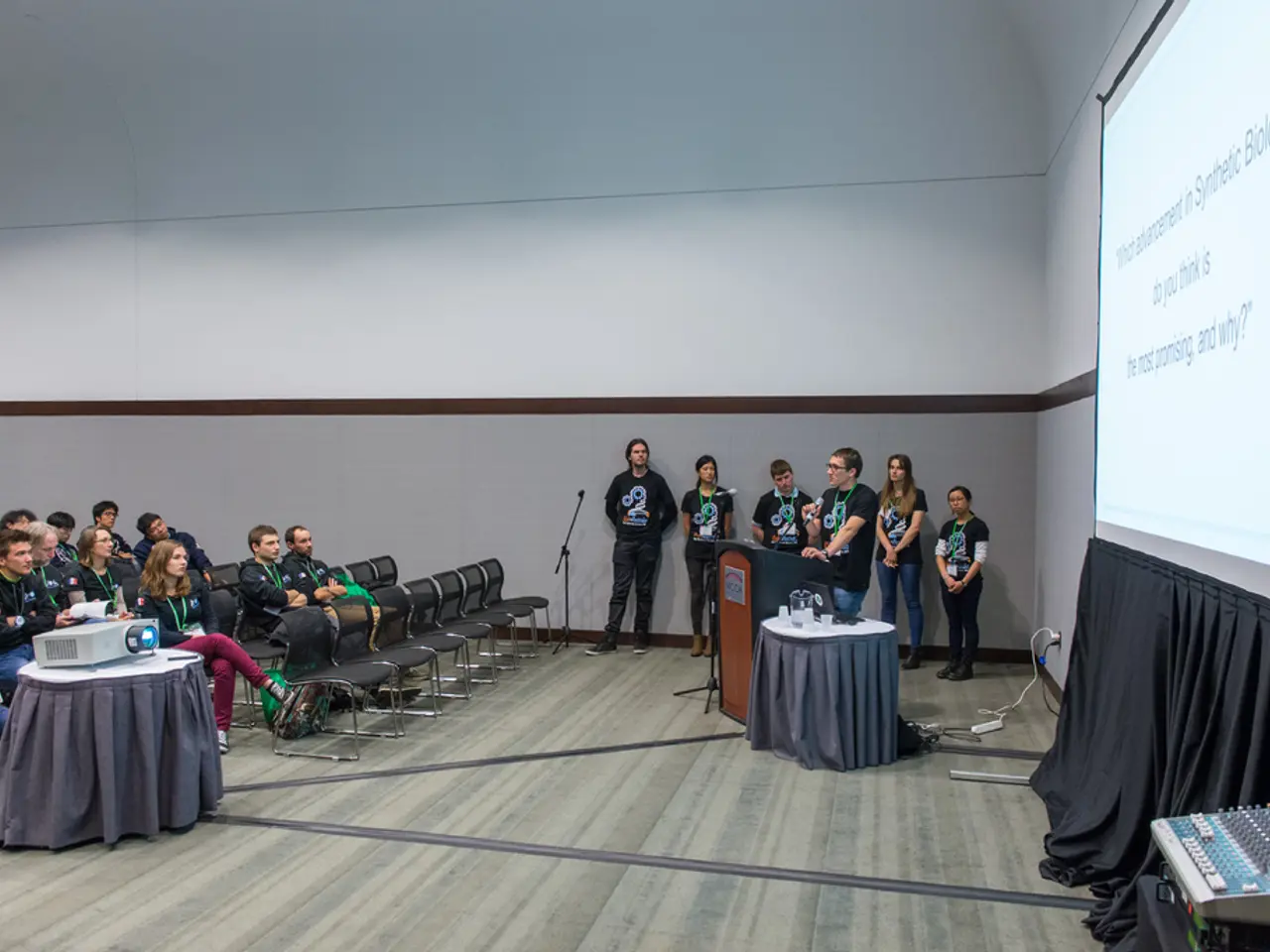Web-based Events: Necessary Audio, Visual, and Technical Equipment for Social Media Presentations
In today's digital age, events are no longer confined to physical spaces. With the rise of live streaming, events are now accessible to a global audience. To effectively adapt event design for digital streaming, it is essential to rethink lighting, sound, direction, and technology with a focus on how these elements translate on camera and resonate with the remote audience.
Lighting
Lighting needs to be designed for the camera, not just the live stage. Cameras are sensitive to contrasts, shadows, and color balance. A well-thought-out lighting control ensures faces are recognizable, colors appear balanced, and overexposure is avoided. Separate lighting plans for the stage and camera are beneficial, including streaming-focused fixtures like LED panels and Fresnel spots to create more visually engaging and balanced shots for viewers.
Sound
Sound quality is critical since digital audiences rely solely on audio-visual input. High-quality microphones (wireless lavaliers, shotgun mics) and sound systems designed to deliver clear dialogue and crisp audio are a must. Sound reinforcement with line arrays and stage monitors improves in-person and streaming audio. Integrating audio mixing with the streaming system helps avoid latency or sync issues.
Direction and Camera Work
Direction and camera work must consider the digital viewer's perspective. Multiple camera angles are important to maintain dynamism and viewer interest. Switch between close-ups of speakers, wide shots of the stage, and audience or presentation views. Use on-screen graphics, overlays, and integrated presentation materials to enrich the stream and keep remote audiences engaged. Effective director coordination ensures smooth transitions and compelling storytelling.
Technology
Technology must support seamless and stable streaming with redundancy built-in. Robust streaming protocols (e.g., SRT or WebRTC) minimize latency and prevent dropouts. Backup internet connections and recording solutions are essential. Choose streaming platforms that allow interactivity through real-time communication, polls, and Q&A to foster engagement. Audiovisual integration tools like DMX lighting control, LED walls, projection mapping, and transparent displays create immersive hybrid experiences.
Popular streaming encoders include OBS Studio, vMix, and Wirecast. Behind-the-scenes moments, interviews, and statements can be interspersed selectively to create a sense of immersion. Thinking of the stream as a source of content can help extend reach and maximize production value. Switching between stage and backstage is particularly effective for creating a sense of immersion.
To make events stand out digitally, content must be adapted for social platforms without compromising on quality or authenticity. Uniform illumination and deliberately placed accents are crucial in digital event lighting. LED panel lights, soft lights, and Fresnel spots are often used for digital event lighting. Presentations, videos, or inserts should be integrated well in advance.
In summary, successful adaptation for digital streaming requires transforming traditional event design into a multi-faceted, camera-aware production that emphasizes clear, well-balanced lighting, pristine sound, dynamic multi-angle direction, and reliable, interactive streaming technology. This approach ensures a professional, engaging experience that feels tailored to remote viewers rather than just a live audience watched through a camera lens.
Social media platforms have become important extensions of stage events for digital audiences. A stable internet connection with an upload speed of at least 10 Mbit/s is recommended for live streams. A mixture of long shots, medium shots, and close-ups can bring the stream to life. Background noise, feedback, and muffled microphone recordings can cause viewers to switch off, so it's crucial to invest in high-quality equipment and careful setup.
A separate lighting plan for the stage and camera is recommended for hybrid events. Well-thought-out lighting control ensures faces are recognizable, colors appear balanced, and overexposure is avoided. Each stream should be tailored to the specific features of its respective social media platform.
The need for lighting adjustments expands beyond the live stage, as cameras are sensitive to contrasts, shadows, and color balance, necessitating a well-thought-out lighting control to ensure faces are recognizable, colors appear balanced, and overexposure is avoided, with streaming-focused fixtures like LED panels and Fresnel spots being beneficial.
In the realm of sound quality, high-quality microphones and sound systems designed for crystal-clear dialogue and crisp audio are indispensable, with adequate sound reinforcement improving both in-person and digital audio.




